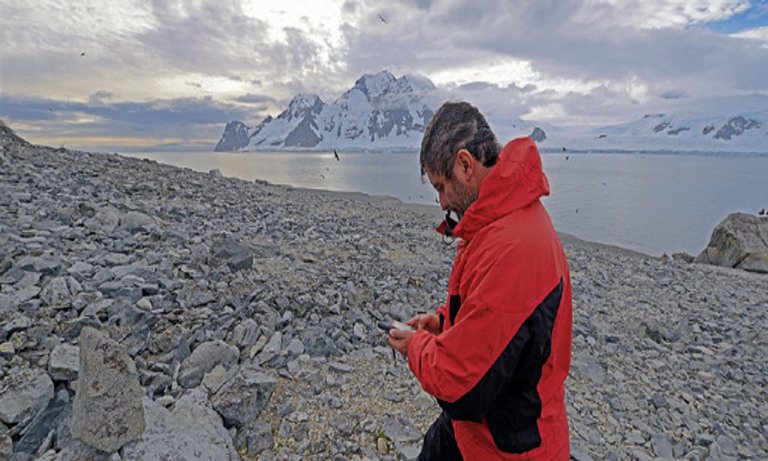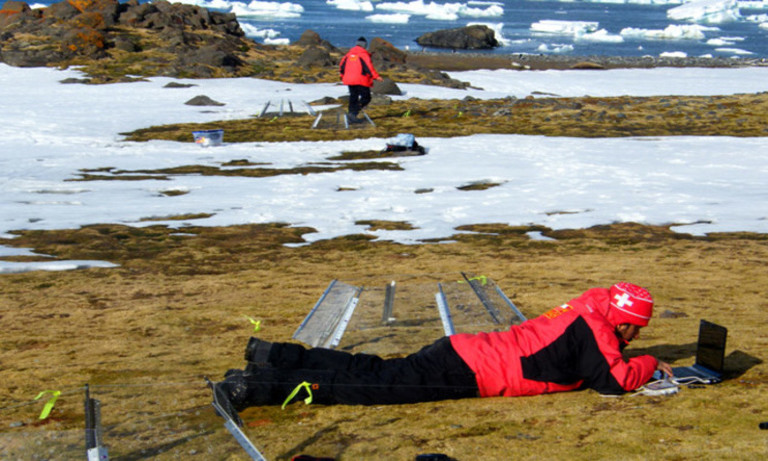Chileans try to elucidate the real impact of global warming on Antarctic plants


Researchers from the “Universidad de La Frontera”, along with colleagues from the “Universidad de Concepción” and “Universidad Mayor” are studying the responses of plants to the increase in temperature and CO2 to clarify the biological basis of the expansion of plant populations in Antarctica.
Punta Arenas, April 1, 2013.- There is innumerable evidence that the scientific community has presented on climate change associated with global warming. The precise mechanisms that living things, such as Antarctic plants, are using to survive in an environment where temperatures rise is still uknown. This is precisely the objective of Dr. Leon Bravo’s project, funded by CONICYT and the Chilean Antarctic Institute (INACH), who is forming an international group dedicated to research the ecophysiology of the two vascular plants that grow in Antarctica: Antarctic carnation ( Colobanthus quitensis) and Antarctic grass (Deschampsia antarctica).
Ecophysiology is a branch of biology that studies processes and interactions between organisms, and the interrelationships between living and inert systems as well. This discipline is dedicated to the research of how this affects the internal processes of individuals. Therefore, the interesting thing about this research is that it will try to answer its hypotheses from a more holistic vision, not only from the relationship of the plant with the environment, but also how this interaction affects the growth, reproduction, survival, number and geographical distribution of the individuals.
The first part of the project, passive heating chambers (known as OTC, “open top chamber”) were installed in Antarctic grass and carnation populations near the Polish base Arctowski, on King George Island, “With the generation of a change of temperature we can compare the plants that grow inside these chambers with those that grow outside, so we could compare growth rates, metabolic rates, reproductive states, aspects that have to do with the ecophysiology of these plants in situ ”, says Bravo .
These two plants have manifested in the last fifteen years an exponential increase in their populations, with an expansion of coverage, the size of individuals and their reproductive potential. The association of this growth with the climate change that the Antarctic peninsula is experiencing was almost immediate. “We want to measure physiological and biochemical parameters and really establish that the link with warming is like this, because there is controversy: it is not fully understood that it is due to a direct effect of temperature. Maybe it is due to the change in temperature, but perhaps the effects are not direct on the physiology of the plant and have to do with other things, ”says the researcher at the University of La Frontera. Bravo explains that perhaps it is not a direct effect on the increase of photosynthesis and the metabolism of the plant, but that the rise in temperature may be causing a change in the microbial communities of the soil, which facilitate the recycling of nutrients and its greater availability that explains that the plant grows more.
This season, Dr. Bravo’s group was able to travel twice to Antarctica. On the first and second trip they worked in the vicinity of the so-called Polish base, but on this last occasion they also sailed aboard the Aquiles ship, of the Chilean Navy, on an exploration trip beyond the Antarctic polar circle organized by INACH , which included the most prominent Chilean polar researchers. Fortunately, Bravo found another place where plant samples can be obtained: Lagotellerie Island, in the Margarita Bay sector (67 ° south latitude). This allows to extend the latitudinal gradient of the studied areas.
The project “Ecophysiology in Antarctic plants: clarifying the biological consequences of climate change in plant populations of the Antarctic Maritime” is long-term and Dr. Bravo expects to have his equipment installed, at least three years in a row and thus study the cumulative effect “During the second year we will collect plants to send them to Canada and study them in a simulator, a biotron, where the effect of temperature and the increase of CO2 in these plants will be simulated. There we should have interesting results, because the effect of CO2 on these plants has hardly been studied, ”says Bravo, who is also a national representative to the SCAR (Scientific Committee on Antarctic Research), the most important international scientific body related to the Continent White.
Ph source: Ebarticevic/INACH
News source: INACH/ http://www.inach.cl/inach/?p=8487
